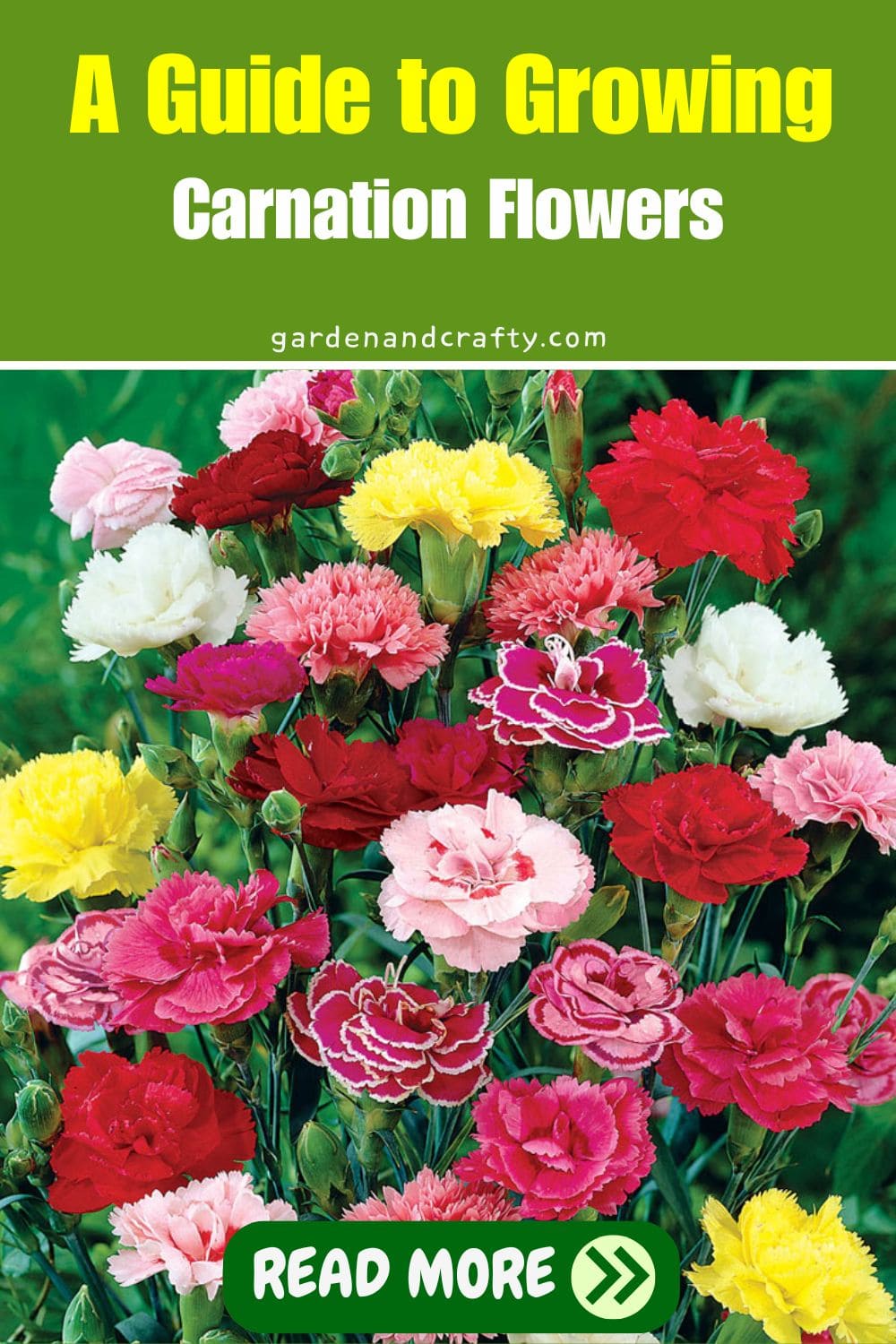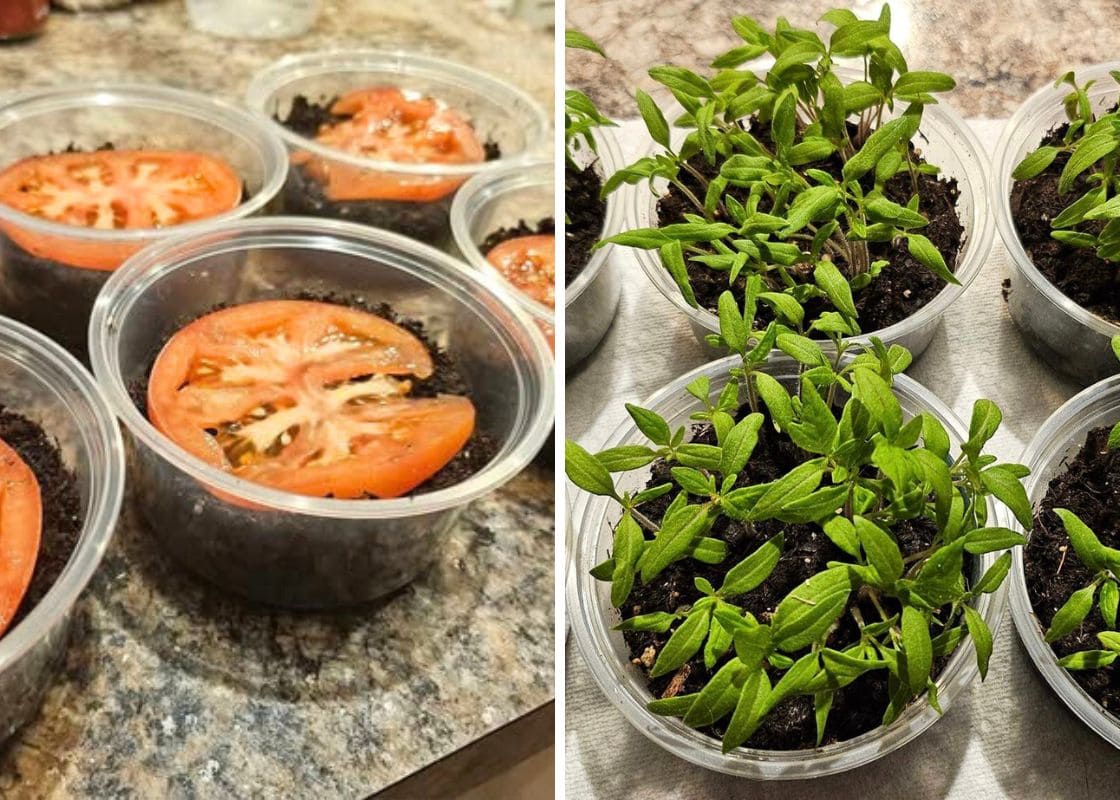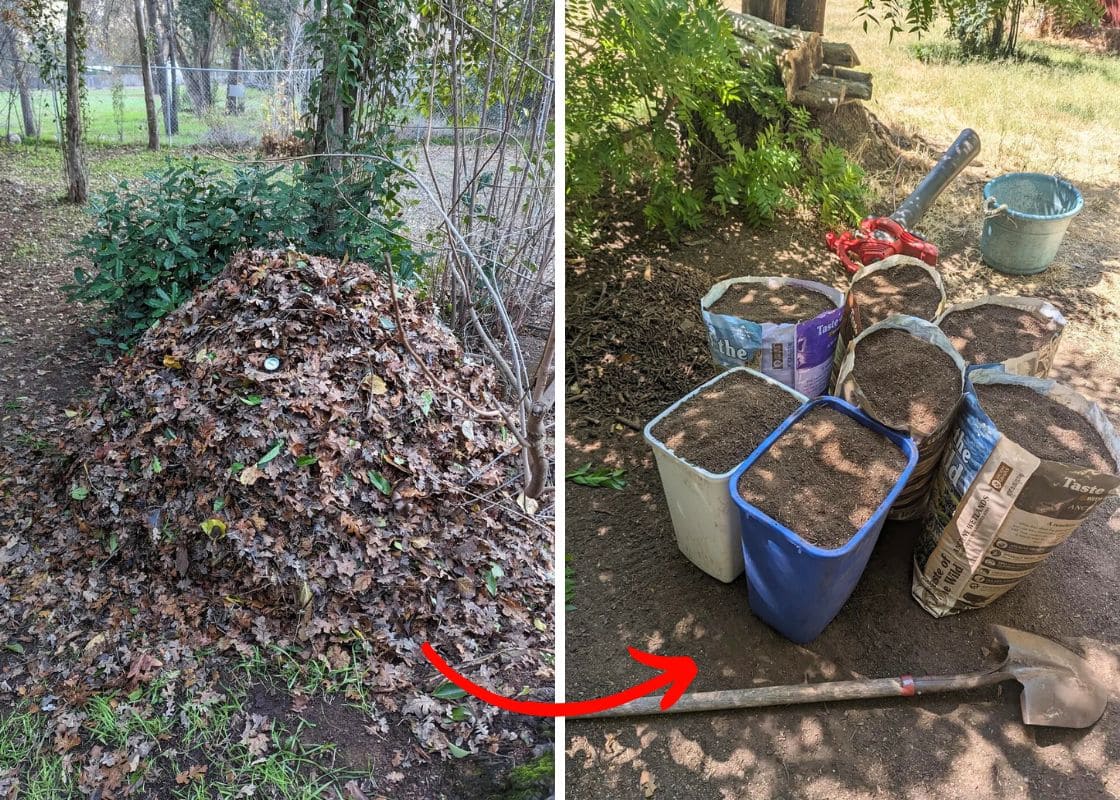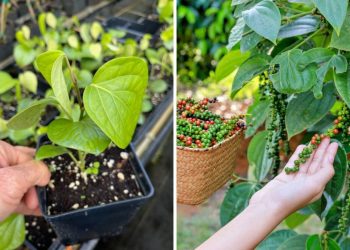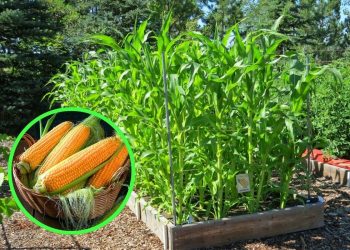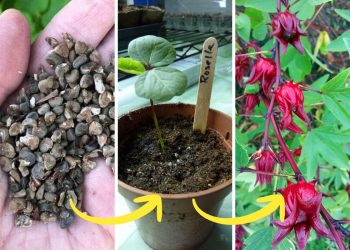Carnation flowers have always enchanted me with vibrant colors and delicate petals. Known as Dianthus, these blooms have a rich history spanning over two thousand years.
Traditionally, carnations symbolize captivation, distinction, and motherly love. In Christian legend, they are linked to the tears of the Virgin Mary.
With meanings and clove-like scent, carnation flowers have become favorite among gardeners and florists over the world.
Summary:
- Carnation flowers are known for their vibrant colors, delicate petals, and rich history.
- Carnations can be propagated from seeds, stem cuttings, or root division.
- When growing carnations, ensure they receive full sunlight and are planted in fertile, well-draining soil. Also, water regularly and space them properly.
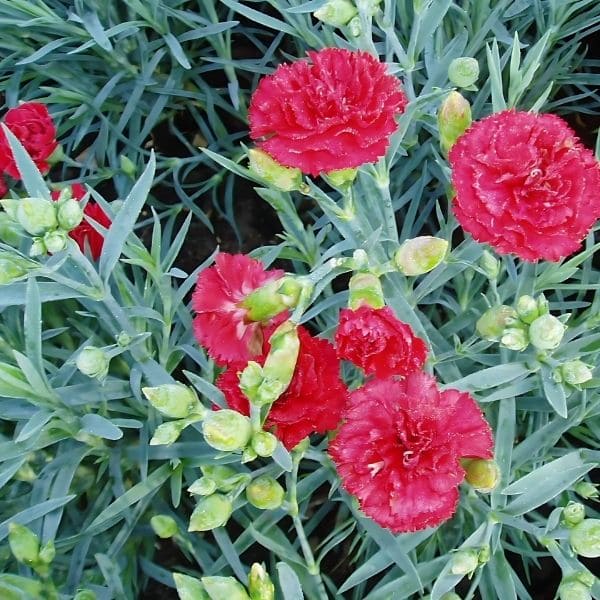
| Botanical Name | Dianthus caryophyllus |
| Common name | Carnation, pinks |
| Family | Caryophyllaceae |
| Plant Type | Perennial |
| Height | 6-24 in. tall, 10-14 in. wide |
| Sunlight | Full sun |
| Soil | Well-draining soil |
| Flower Color | White, pink, red |
| Flowering Season | Spring |
| Habitat | Europe |
Propagation
From Seeds
If you’re aiming for first-year blooms, begin by sowing seeds indoors 12-14 weeks before the last frost. For outdoor sowing, plant in April or May, but it will bloom in the second year.
I fill my trays with a well-draining potting mix and sprinkle the seeds lightly. A gentle watering follows, and then I cover the trays with a cloche or a plastic bag to create a greenhouse effect.
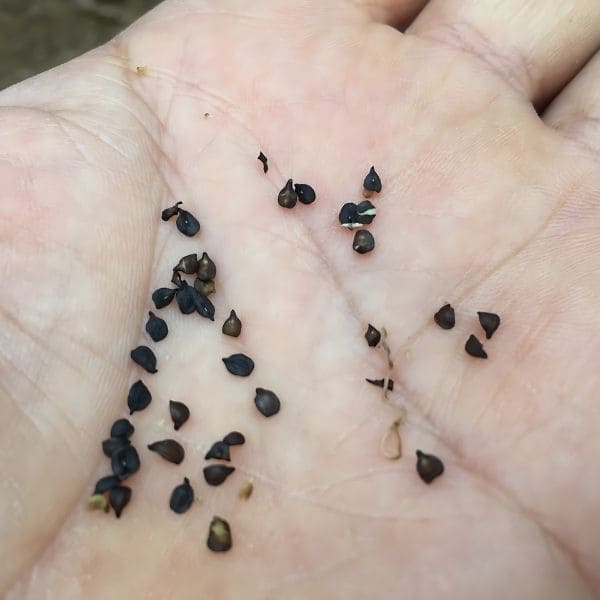
After the last frost, when the seedlings have developed 2-3 sets of leaves, we can transplant them into the garden.
When sowing directly outdoors after the last frost, plant the seeds about one-eighth inch deep.
As the plants grow and reach 4-6 inches tall, I thin them about 10 inches apart. Also, you should keep it in temperatures between 60-70°F (15-21°C).
Stem Cuttings
During the cool mornings of summer, you can select four- to six-inch cuttings from non-flowering stems, ensuring to cut just below a set of leaf nodes with a clean, sharp knife.
After removing the bottom leaves, I sometimes dip the cuttings in rooting hormone for an extra boost.
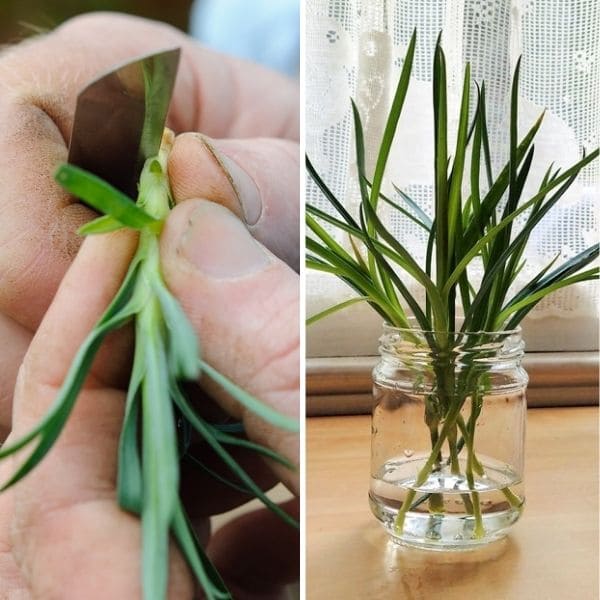
Next, I fill pots or a seed tray with a fine-textured potting mix. I also insert the cuttings into the soil up to the first set of leaves and place the tray in a sunny spot.
In about 3 to 4 weeks, roots begin to form, and new leaves appear. Once the cuttings are well-rooted, I transplant them into individual pots and move them to the garden.
Root Division
Turning to early autumn, you can carefully dig up the entire clump, making sure to insert my spade a few inches away from the plant’s perimeter.
Once the plant is out of the ground, I use a pair of clean garden shears to cut the plant into smaller sections and ensure each section has several healthy shoots and roots.

I then plant the new sections into prepared locations and water the divisions well. Dividing your carnations every two to three years will keep them healthy and vigorous.
Growing Carnation Flowers (From Seeds)
Preparation
You should choose high-quality seeds and soak the seeds in water overnight. Then, place them on a damp paper towel and keep them in a warm spot.
However, you should note that the varieties of carnation can affect your result. So, refer to my suggestion:
- Large-Flowered Carnations (Standard Carnations): Known for their large, single blooms, popular for floral arrangements and bouquets.
- Dwarf-Flowered Carnations: Compact plants producing smaller blooms, ideal for garden borders and container gardening.
- Spray or Miniature Carnations: Produce multiple smaller flowers on each stem, perfect for adding a touch of color to mixed floral displays.

Next, you should look for a sunny location since carnations thrive in full sunlight and make sure good air circulation.
To prepare the soil, start by tilling it thoroughly and incorporate organic matter such as compost or well-rotted manure to enhance the soil’s fertility and drainage.
Growing Carnation Seeds
About six to eight weeks before the last frost date, I gather my supplies and get to work. I use small containers or seed trays filled with potting soil.
After sprinkling the seeds evenly over the surface, I lightly cover them with about 1/8 inch of soil and keep the soil moist by using a mist sprayer.
Next, you should place the container in a sunny window and wait for the first signs of life within three days.
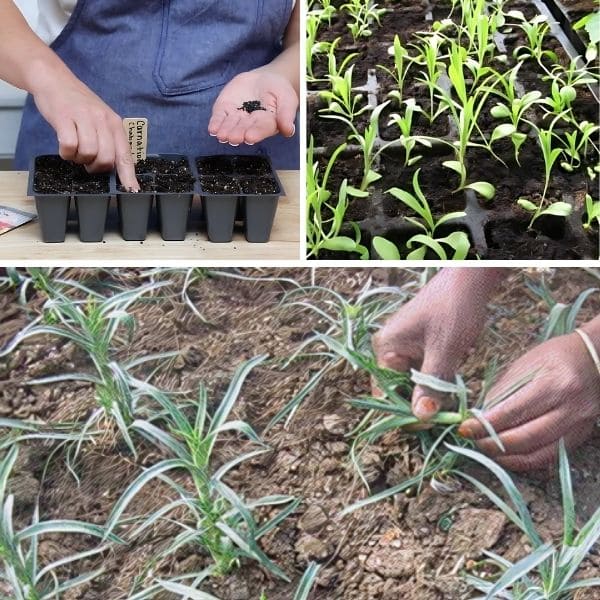
In late spring, once the seedlings reach about 4-5 inches tall with 2 or 3 leaves, you gradually expose them to outdoor conditions over a week.
You also need to make sure the roots are just below the surface and space the plants about 10 inches apart.
For a vibrant garden, I like to plant marigolds and lavender alongside my carnations as they can repel pests and add complementary colors and fragrances to my garden.
Care for Carnation Flowers
Here are main requirement when caring for carnation you need to remember:
- Keep soil moist but not waterlogged.
- Provide full sunlight.
- Remove spent blooms and cut back by half in late summer.
- Use natural mulch, avoid dyed products.
- Be ideal for USDA zones 7 to 10.
Light
Carnations thrive with 4 to 6 hours of direct sunlight daily. Morning sun is ideal to keep colors vibrant and prevent petal fading.
While they do best in full sun, some partial shade is beneficial, especially in hot climates.
Soil
Carnation flowers thrive in well-draining, fertile soil with a pH between 6.0 and 7.0. You also need to make sure proper drainage to prevent root rot.
Then, amend acidic soil with lime to create an alkaline environment to enhance calcium, magnesium, and sodium levels.
Water
You should monitor outdoor carnations to keep the soil moist, especially if rainfall is below 1 inch weekly.
It’s better for you to water them once or twice a week in early morning if the top 3 inches are dry and apply hand watering to prevent petal damage and rot.
Temperature and Humidity
Carnations thrive in moderate temperatures, ideally between 50°F and 80°F (10°C to 27°C) and suitable for hardiness zones 7 to 10.
They prefer moderate humidity and good air circulation to prevent powdery mildew.
As a result, you need to ensure proper spacing and ventilation and occasionally spritz with cool water in very hot weather.
Pruning
Regularly remove faded flowers to encourage continuous blooming as well as trim spent stems and foliage to maintain a tidy appearance.
For extensive pruning, cut back plants in early spring to about one-third of their height at a 45-degree angle to help them boost robust growth and vigor.
Fertilizer
In early spring, you can apply a balanced, slow-release fertilizer with a 10-10-10 N-P-K ratio.
However, throughout the growing season you should turn to moderate feeding to ensure sturdy stems and vibrant blooms without excessive foliage growth.
Overwintering
In late fall, cut carnations down to a few inches from the ground and add a layer of mulch around the base to protect roots from extreme temperatures.
Then, you should cover them with a breathable fabric during particularly cold nights.
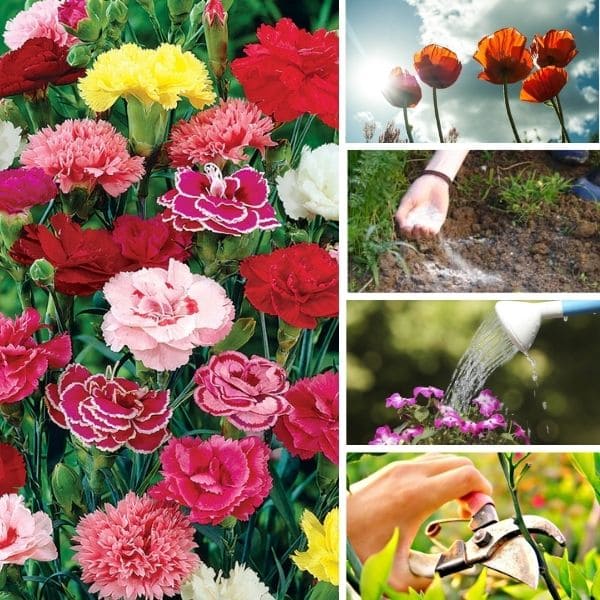
Pests and Diseases
Aphids and spider mites are common pests that can harm carnations. Aphids suck sap from leaves and stems, while spider mites cause speckled leaves and webbing.
However, you can control them easily with insecticidal soap, neem oil, or miticides.
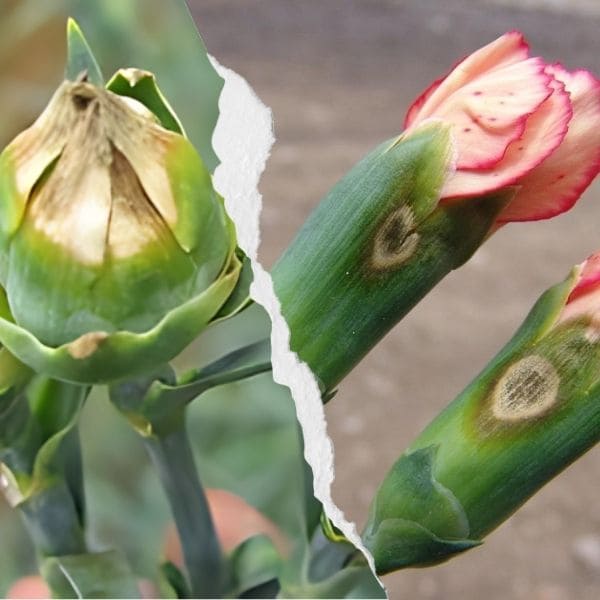
Additionally, fusarium wilt causes yellowing and wilting but you can prevent it with well-draining soil and proper watering.
Besides, treat with fungicides and remove affected leaves if you see rust appearing as orange spots on leaves.
Common Problems
Yellowing Leaves
Yellow leaves often indicate overwatering or nutrient deficiencies. To solve this, you need to ensure proper drainage and fertilize appropriately.
Brown Blooms or Leaves
This problem may result from fungal infections or excessive sun exposure of carnation flowers. Therefore, using fungicides and providing partial shade are the best methods.
Holes in buds
Holes in buds are typically caused by insects like caterpillars or beetles.
If you face this situation, hand-pick the pest. However, if they appear with the large number, you have to look for the interference of insecticides.
Wilting
This can occur due to root rot from poor drainage or insufficient watering; so it doesn’t have any effective method except for improving soil drainage and watering consistently.
Harvest
I always harvest fresh carnation flowers in the early morning when the blooms are vibrant and fully hydrated.
I use sharp scissors or pruners to cut the stems, making sure they are 12-18 inches long for floral arrangements, bouquets, and corsages.
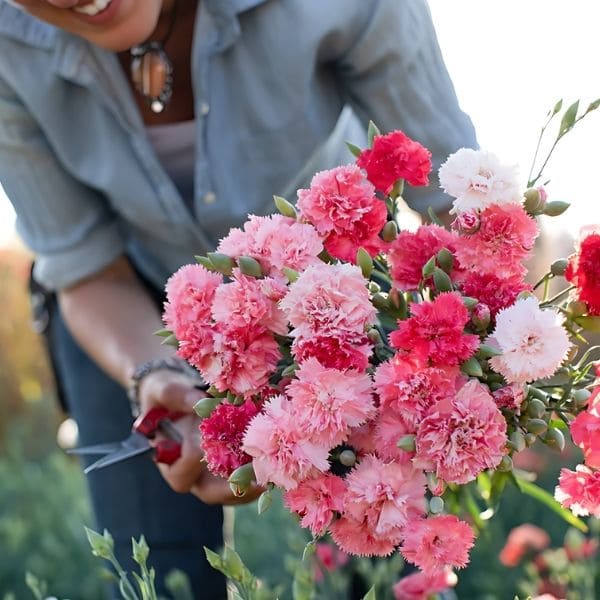
Once harvested, I store the carnations in a cool environment at around 33-35°F (0.5-1.5°C).
Freshly cut carnations can last up to two weeks in a vase if you change the water regularly and keep the arrangement out of direct sunlight.
Preservation
Dried Carnation Seeds
Until the seed pods are dry and brown, I use seed collecting trays or envelopes and carefully gather the seeds.
After that, I make sure they are cleaned and thoroughly dried and store the seeds in a cool, dry place with envelopes or small jars.
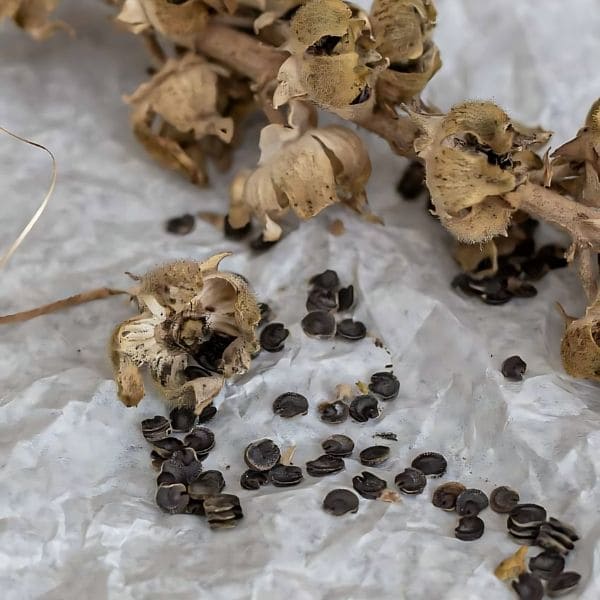
Dried Carnation Flowers
To preserve carnation flowers by drying, you should hang them upside down in a dark, dry, and well-ventilated area for 2-3 weeks.
Once dried, you can store them in a cool, dry place away from sunlight and use them for creating art, pictures, or unique gifts.

FAQs
Can I grow carnations in pots?
Yes. You should choose a container with good drainage and fill it with well-draining potting mix. Then, place the pot in a sunny spot and water regularly to keep the soil moist.
Is a carnation a death flower?
Carnations are not typically associated with death. They symbolize love, fascination, and distinction. In some cultures, different colors of carnations may have specific meanings.
Is it OK to eat carnations?
Yes, carnations are edible and can be used to garnish salads. However, only consume carnations that have been grown without pesticides or harmful chemicals.
The petals have a slightly spicy, clove-like flavor that can add a unique taste to your culinary creations.
How poisonous are carnations?
Carnations are mildly toxic to pets if ingested. They can cause mild gastrointestinal upset in pets, such as vomiting and diarrhea.
